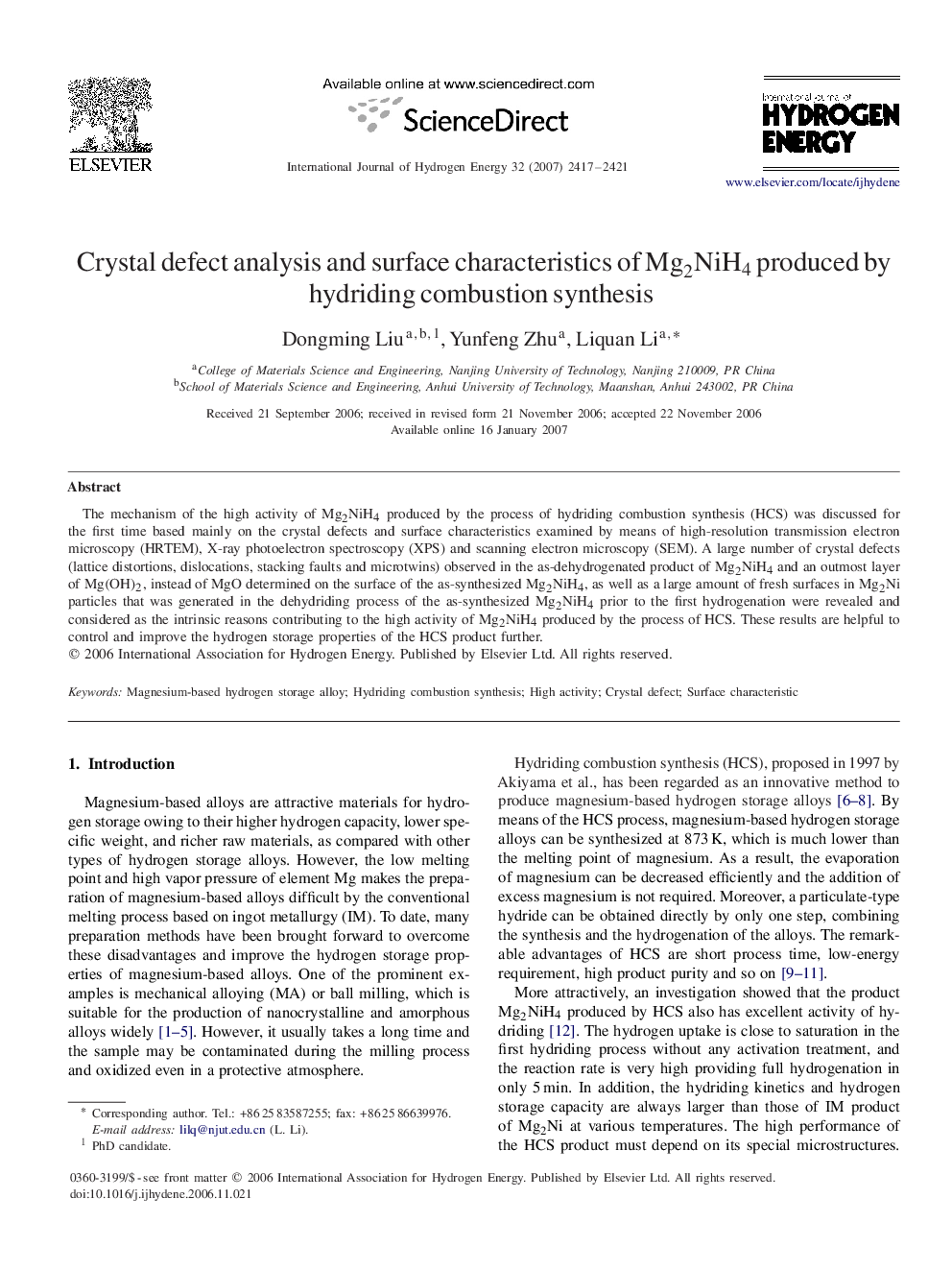| Article ID | Journal | Published Year | Pages | File Type |
|---|---|---|---|---|
| 1280347 | International Journal of Hydrogen Energy | 2007 | 5 Pages |
The mechanism of the high activity of Mg2NiH4Mg2NiH4 produced by the process of hydriding combustion synthesis (HCS) was discussed for the first time based mainly on the crystal defects and surface characteristics examined by means of high-resolution transmission electron microscopy (HRTEM), X-ray photoelectron spectroscopy (XPS) and scanning electron microscopy (SEM). A large number of crystal defects (lattice distortions, dislocations, stacking faults and microtwins) observed in the as-dehydrogenated product of Mg2NiH4Mg2NiH4 and an outmost layer of Mg(OH)2Mg(OH)2, instead of MgO determined on the surface of the as-synthesized Mg2NiH4Mg2NiH4, as well as a large amount of fresh surfaces in Mg2NiMg2Ni particles that was generated in the dehydriding process of the as-synthesized Mg2NiH4Mg2NiH4 prior to the first hydrogenation were revealed and considered as the intrinsic reasons contributing to the high activity of Mg2NiH4Mg2NiH4 produced by the process of HCS. These results are helpful to control and improve the hydrogen storage properties of the HCS product further.
